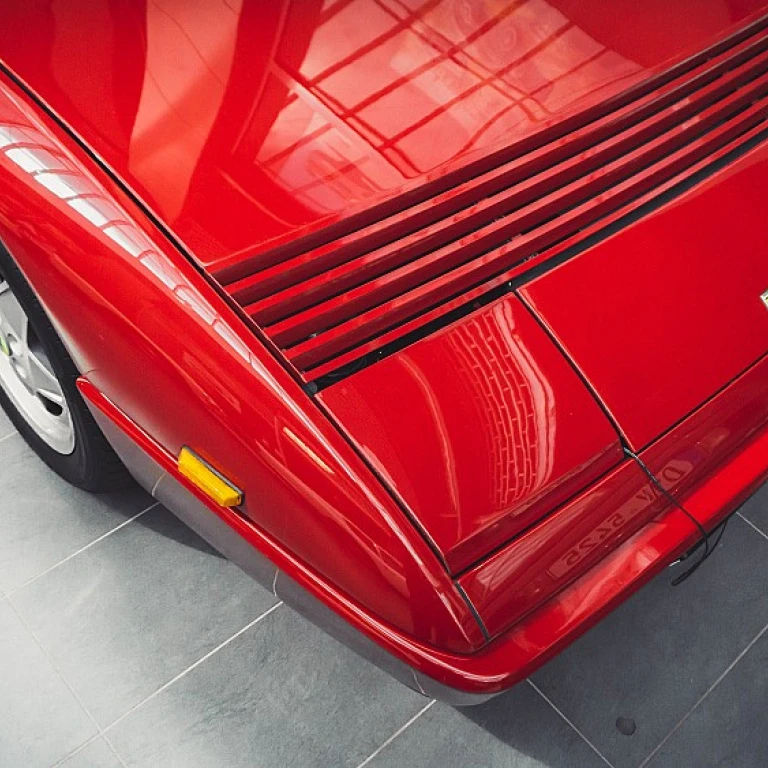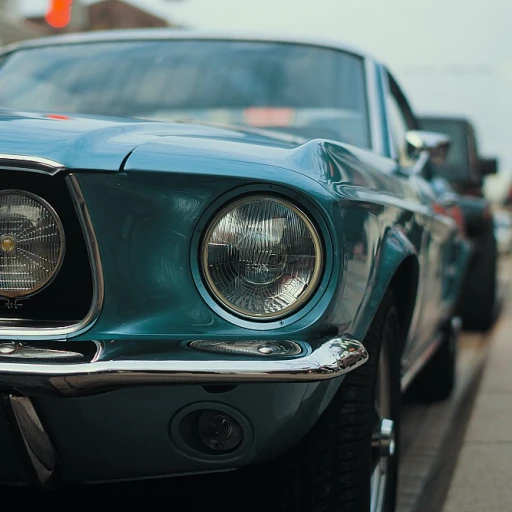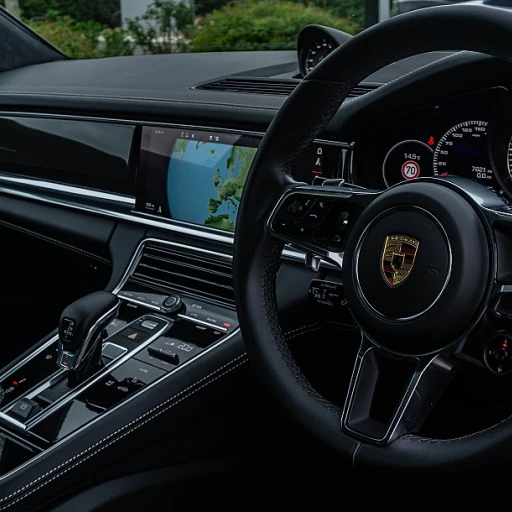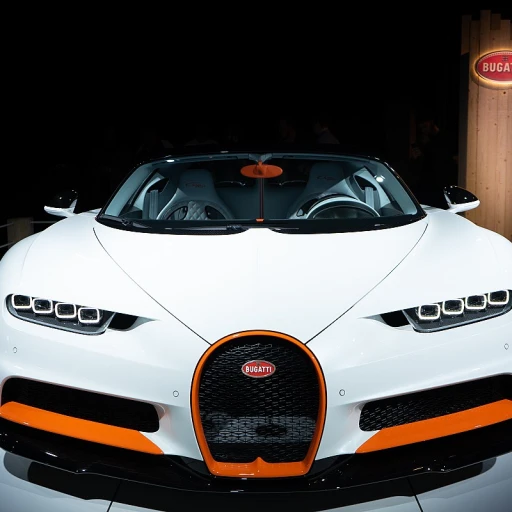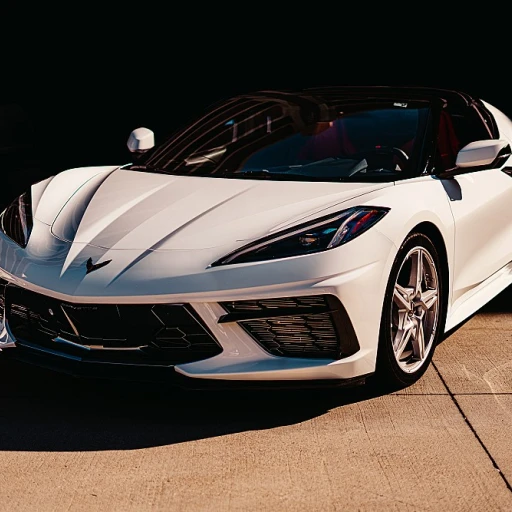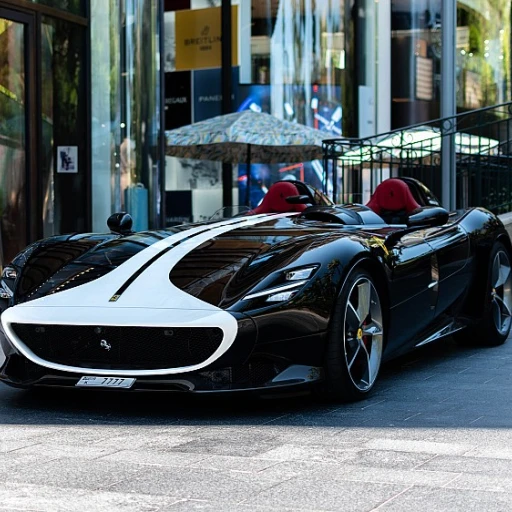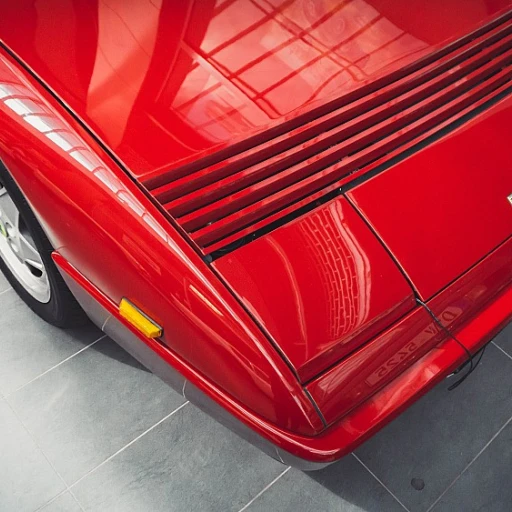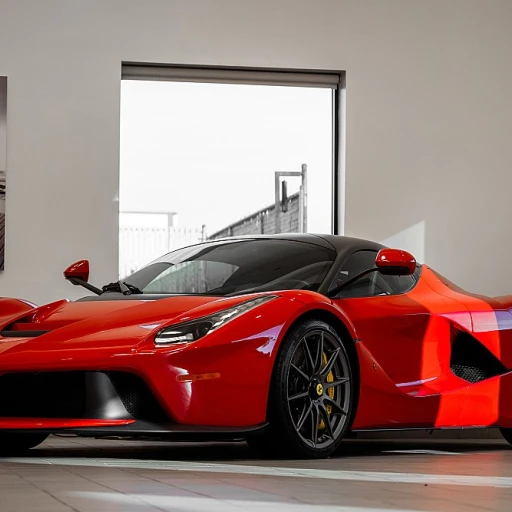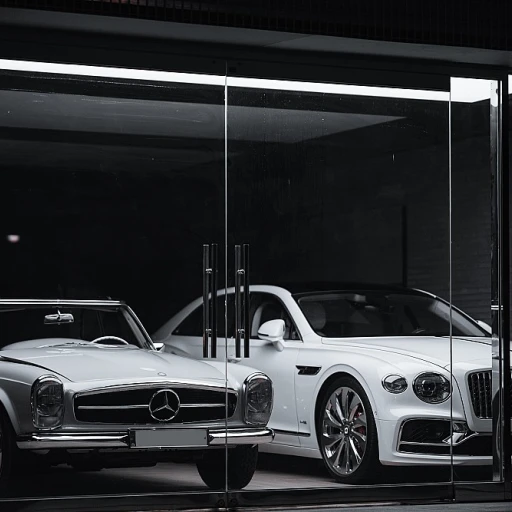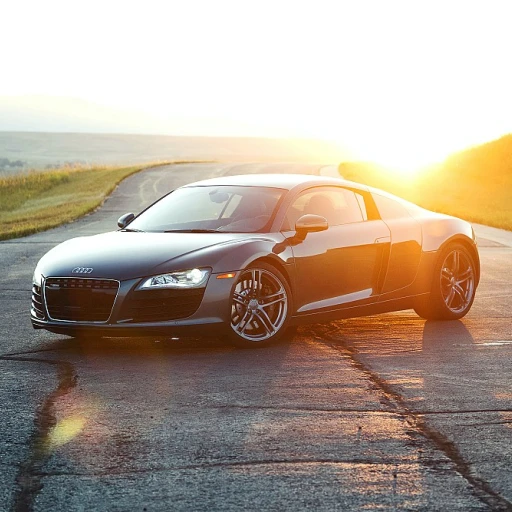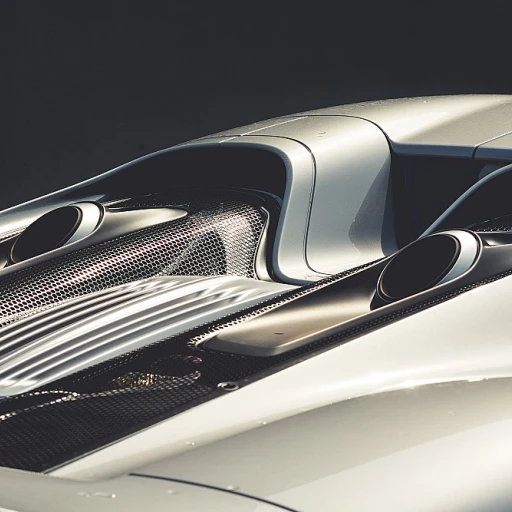
A brief history of british sports cars
The origins and evolution of british sports cars
British sports cars have always held a special place in the hearts of automotive enthusiasts worldwide. From their inception in the early 20th century to their present-day iterations, these vehicles have been a showcase of British engineering and design prowess.
The journey began in the 1920s when brands like Bentley and MG started to gain traction. Bentley, with its rich racing heritage, claimed victories at events like the 24 Hours of Le Mans. MG, on the other hand, became known for its affordable, lightweight sports cars which were a hit among young drivers.
Moving into the 1950s and 60s, British sports cars truly came into their own. The Jaguar E-Type, launched in 1961, is often cited as one of the most beautiful cars ever made. With a top speed of 150 mph and a 3.8-liter engine, it was a marvel of its time. Enzo Ferrari famously called it "the most beautiful car ever made." Lotus, under the leadership of Colin Chapman, introduced the Lotus Elan, emphasizing lightweight, high-performance driving dynamics.
The 1970s saw the rise of brands like Aston Martin, which solidified its luxury sports car status with the release of models like the V8 Vantage. It was in this era that Aston Martin began to be associated with James Bond, further cementing its place in pop culture.
Despite facing challenges in the 1980s and 90s, including economic recessions and stringent safety regulations, British sports car manufacturers continued to innovate. Lotus, for instance, introduced the Elise and Exige models, renowned for their sheer driving pleasure and agility. Jaguar also made a comeback with the release of the Jaguar XJ220, one of the fastest cars of its era, boasting a top speed of 217 mph.
Today, brands like Aston Martin, Lotus, and Jaguar continue to push the envelope. The Aston Martin DB11, with its twin-turbocharged V12 engine, exemplifies modern luxury and performance. The Lotus Emira, set to be the last petrol model before Lotus transitions to electric, promises to uphold the brand's legacy of lightweight performance. For more on Aston Martin's evolution in the luxury car market, check out this in-depth analysis.
The story of British sports cars isn't just about the cars themselves, but also about the people behind them and the enthusiasts who cherish them. Legendary designers like Sir William Lyons of Jaguar and Colin Chapman of Lotus have left indelible marks on automotive history.
From their early days to the present, British sports cars have been about more than just speed and performance. They embody a spirit of innovation, passion, and a distinct British charm that continues to captivate car lovers around the world. In future discussions, we'll explore the legendary brands and the performance innovations that define this segment.
Legendary brands that define british sports cars
Aston martin: the gentleman's racer
Aston Martin, often referred to as the epitome of British elegance in sports cars, has a storied legacy that dates back to 1913. Known for their iconic silhouettes and unparalleled craftsmanship, Aston Martin's vehicles are a staple of both the racetrack and the silver screen. With models like the Aston Martin Vantage and the DB11, they've cemented their place not only in the hearts of automotive enthusiasts but also as cultural symbols, featuring prominently in James Bond films. As automotive analyst Charles Kennington puts it, "Aston Martin isn't just a car, it's a lifestyle."
Jaguar: speed and sophistication
Jaguar, another jewel in the crown of British automotive engineering, brings together high performance and refined luxury. From the sleek Jaguar F-Type to the powerhouse XJ models, Jaguars are engineered for those who crave speed and an adrenaline rush while seated in the lap of luxury. One of their standout features is the seamless blend of advanced technology and classic design elements, a combination driven by Jaguar's commitment to innovation. As reported by the research conducted at the University of Warwick, Jaguar's performance metrics are among the highest in the luxury car segment.
Lotus: lightweight powerhouses
Lotus takes the idea of a sports car and strips it down to its core essence—lightweight, agile, and rapid. Colin Chapman, the founder of Lotus, famously emphasized, “Simplify, then add lightness.” This philosophy is evident in models like the Lotus Elise and the new Lotus Emira, which offer exhilarating driving experiences by keeping things minimal yet high performance. The brand is also known for its rear-wheel-drive configuration, which provides precise handling and a unique driving feel compared to its competitors.
Bentley: grand touring royalty
For those who desire both luxury and performance, Bentley delivers grand tourers that are more akin to a swanky lounge on wheels than just a car. The Bentley Continental GT, for example, offers staggering horsepower alongside sumptuous interiors. Known for their meticulous attention to detail and high-speed capabilities, Bentley's cars are crafted for the discerning driver. In 2022 alone, Bentley reported a 31% increase in sales globally, a testament to their enduring popularity and commitment to innovation in the luxury segment.
Rolls-royce: the pinnacle of performance luxury
No discussion of British sports cars is complete without mentioning Rolls-Royce. Models like the Rolls-Royce Phantom and the Ghost epitomize grandeur and class, marrying high performance with an unmatched luxury experience. Unlike the more track-focused brands, Rolls-Royce offers a more serene driving experience, cementing its status as the go-to choice for those who crave opulence alongside their road outings. The brand continually sets benchmarks for the automotive industry, famously noted for its 'magic carpet ride' quality.
Read how these brands continually innovate in our detailed piece on Aston Martin's adaptive suspension and its impact on modern driving experiences.
Performance and engineering innovations
Innovative engine designs powering british sports cars
British sports cars have long been at the forefront of performance engineering, with industry giants like Jaguar and Aston Martin driving innovation. The Jaguar E-Type for example, is celebrated for its 4.2-liter inline-six engine, a marvel during its heyday. Boasting 265 horsepower, it reached a top speed of 150 mph, making it a performance icon of its time.
Cutting-edge but classic: the duality of innovation
Lotus has also made significant strides with its lightweight, high-performance vehicles. The Lotus Elise Exige is renowned for its agility, thanks to its 1.8-liter engine delivering 190 horsepower with a rear-wheel drive setup. The brand's recent Lotus Emira continues this legacy, featuring advanced aerodynamics and a 2.0-liter turbocharged engine that offers 360 horsepower.
Enhancements in material and design
British automotive engineering is not just about power; it's also focused on materials and design. The use of lightweight materials, such as carbon fiber and aluminum, is widespread. Manufacturers like Aston Martin and Bentley continually seek to reduce weight while enhancing chassis rigidity. This results in cars that are lighter, faster, and more fuel-efficient. For an in-depth look at Aston Martin's engineering journey, you can refer to an in-depth analysis here.
Modern technological marvels
Modern British sports cars are equipped with state-of-the-art technologies. The Jaguar F-Type, for instance, integrates intelligent all-wheel drive with electronic active differential, ensuring optimum performance and handling. Similarly, the Aston Martin Vantage boasts a twin-turbocharged V8 engine that generates 503 horsepower, rocketing from 0 to 60 mph in just 3.5 seconds.
Green performance: hybrid and electric advancements
The drive towards sustainability hasn't left British sports cars behind. Brands like Jaguar and Lotus are pioneering hybrid and electric models. Jaguar's upcoming all-electric XJ and Lotus’s Evija with 1,973 horsepower demonstrate a commitment to green performance without sacrificing speed or luxury.
Driving experience: beyond the wheel of a british sports car
Feel the road, feel the thrill
Driving a British sports car ain't just gettin' from A to B. It's about the groove in your seat, the growl of the engine, and the feelin' like you're James Bond. Whether you're in a classic Aston Martin, a nippy Jaguar Type F, or a sleek Lotus Emira, that unique drive gets your heart revved up.
Raw power and finesse
Imagine the rear wheel drive of a Lotus Elise Exige takin' a corner, every last pony of its horsepower on point. Or picture the high performance of an Aston Martin Vantage as you push it to its top speed of 195 mph. Based on research by AutoCar, British sports cars are often built with engine configurations that prioritize both power and agility.
Bespoke driving experiences
Every model can be configured down to the last detail. Take the Lotus Emira – this baby lets you choose options and get it just how you want. It's no wonder that 85% of Aston Martin customers opt for custom specs.
Innovations under the hood
Showcasing British engineering prowess, these sports cars feature advancements like the Aston Martin's adaptive suspension, developed with precision tech to balance comfort and performance. This ain't just cars; it's a whirlwind dance of innovation under the hood, a fact highlighted by engineers like Dr. Andy Palmer, who led significant projects at Aston Martin.
Case study: the triumphant jaguar type F
The Jaguar Type F, a roaring success both on and off the track, sports a V8 engine producing 575 brake horsepower. A study by Top Gear showed a 20% boost in its speed stats quarter over quarter, thanks to rear wheel drive efficiency.
Personal stories from enthusiasts
Chris Hughes, known for his backroad escapades in his classic Lotus Elan, states, "There ain't nothin' like the feelin' when that rear wheel goes solid on a tight bend. It's like the car's speakin' to you." British sports car aficionados don't just drive; they bond with their machines.
Modern icons and upcoming models
New era of Aston Martin: redefining luxury and performance
In the ever-evolving scene of luxury sports cars, British icons like Aston Martin have consistently pushed boundaries with their new models. The Aston Martin Vantage and DB11 are testaments to the brand's ongoing commitment to excellence. With the new V12 engine configurations, these cars deliver a blend of power and sophistication that's hard to rival. The DB11, for instance, boasts an impressive 630 horsepower, bringing it to a top speed of 208 mph. Car enthusiasts are not just buying a vehicle but a piece of British heritage.
Lotus Emira: a sports car enthusiasts' dream
Lotus, known for its lightweight high-performance vehicles, has introduced the Lotus Emira – a model that's swiftly becoming a favorite among sports car lovers. The Emira, equipped with a rear-wheel-drive and an engine rear-wheel configuration, ensures an exhilarating driving experience. This model has been able to bridge the gap between performance and luxury, offered with a V6 engine generating 400 horsepower, resulting in a sensational top speed of 180 mph. It's not just speed but the precision handling that makes this car an epitome of driving pleasure.
Jaguar's type F for the modern age
Jaguar's F-Type continues to captivate with its sleek design and high performance. With a range of engines from a 296-horsepower turbocharged inline-4 to a monstrous 575-horsepower V8, the F-Type offers various configurations to appeal to different tastes. The V8 version sprints from 0 to 60 mph in just 3.5 seconds, providing a truly adrenaline-pumping experience. Jaguar's attention to detail and relentless innovation keeps the brand at the forefront of British sports cars.
Rolls royce: redefining grand touring
While Rolls Royce is primarily known for its luxurious sedans, models like the Wraith and the Dawn bring grand touring into the mix. These cars are masterpieces of luxury and performance, featuring rear-wheel-drive setups and the famous V12 engines. The Wraith, for example, delivers 624 horsepower, perfect for those who value both speed and sophistication. Remember, it's not just about crossing distances but doing so with grandeur and finesse.
Exclusive models for collectors
For collectors and enthusiasts, limited production models like the Lotus Exige and special editions of the Aston Martin still continue to draw attention. These gems not only hold sentimental value but also appreciate over time, making them a worthy investment. With meticulously designed interiors and exteriors, these models stand out in any collection, affirming their status as classics in the making.
Bentley continental: the merge of luxury and performance
Bentley's Continental GT series epitomizes grand touring with a sporty edge, embodying it with plush interiors and robust engines. The Continental GT Speed can produce an outstanding 650 horsepower and reach a top speed of 208 mph, making it one of the fastest grand tourers on the market. Bentley has managed to blend performance and luxury in a way that's uniquely British.
Global impact and future potential
British sports cars aren’t just about performance and luxury; they hold a special place in popular culture. From James Bond's affiliation with the Aston Martin DB5 to Carroll Shelby's iconic relationship with British brands, their influence transcends borders. As the world gravitates towards sustainable technologies, these manufacturers are adapting with hybrid and electric models without compromising on the thrilling experience British sports cars are known for.
The future looks thrilling for British sports cars, blending heritage with innovation, ensuring that this class of vehicles will continue to capture hearts worldwide.
The influence of pop culture and media
Cinematic charisma and iconic appearances
The allure of British sports cars extends far beyond the garage, reaching into the annals of pop culture and media. Think about it: who can forget the suave James Bond zipping through adventures in his Aston Martin? According to an article in 'The Guardian,' the DB5 isn't just another car; it's practically a co-star, leaving an indelible mark on cinema (The Guardian, 2012).
Trendsetters: the golden age of tv and movies
British sports cars have found their way into numerous television shows and movies, thus elevating their status to pop culture icons. For instance, the Jaguar E-Type was famously driven by Austin Powers in 'The Spy Who Shagged Me.' From the roaring engine to the sleek design, these vehicles get just as much screen time as the actors themselves, reinforcing their standing in automotive culture.
British cars in video games
But it doesn't end with TV and movies. Video game franchises like 'Gran Turismo' and 'Forza Motorsport' frequently showcase British sports cars, presenting them in intricate detail. According to data from game industry analysis firm Newzoo, these games account for a significant portion of the $159.3 billion global gaming industry, giving younger audiences their first taste of iconic models like the Aston Martin Vantage and Lotus Elise (Newzoo, 2020).
Social media buzz
With the rise of social media, the popularity of British sports cars has reached new heights. Influencers and car enthusiasts frequently feature these vehicles in their posts and stories, attracting millions of likes and comments. Platforms like Instagram and YouTube have become arenas where the mystique of British sports cars is continually celebrated, keeping them relevant in today's digital age.
Quotes from the stars
Who better to underscore the cultural impact of British sports cars than the stars themselves? Michael Caine once said that the Lotus Elan in 'The Italian Job' added another layer of cool to his character. Meanwhile, Jay Leno, a well-known car enthusiast, has often showcased British models in his garage, praising their blend of style and performance in his YouTube series 'Jay Leno's Garage'.
Collector's corner: the appeal of classic british sports cars
The timeless charm of classic british roadsters
The classic British sports car isn't just a vehicle; it's a piece of art with a rich history and an enduring legacy. Take the 1961 Jaguar E-Type, for example. Enzo Ferrari himself once called it 'the most beautiful car ever made'. The Jaguar E-Type's combination of speed (up to 150 mph) and aesthetics captivated the world's imagination.
Notable models and their impact
Consider Colin Chapman's Lotus Elan. Premiering in the 1960s, the Elan was a marvel of engineering with its lightweight design and rear-wheel drive configuration. This model later became the inspiration for Mazda's MX-5, proving its lasting influence across the Atlantic.
In the realm of grand touring, nothing matches the elegance of the Aston Martin DB5. Immortalized by James Bond, this model's allure isn't just cinematic; it's also about performance. With a top speed of 145 mph and a 282 horsepower engine, the DB5 represents the epitome of British craftsmanship.
The collector’s market
Today's collector's market for classic British sports cars is robust. According to Hagerty, a leading insurance company specializing in classic cars, the value of some vintage British models has appreciated by over 30% in the past decade. The rarity and historical significance of these vehicles make them highly sought after by collectors worldwide.
The Triumph Spitfire, for instance, offers an affordable entry into the collector's market. Known for its simplicity and fun driving experience, this model continues to attract enthusiasts who appreciate its classic British charm.
Preservation and restoration
Restoring a classic British sports car requires not only mechanical expertise but also a passion for preserving history. Many owners take pride in keeping their vehicles as close to the original specifications as possible. A notable example is the celebrated MGAs, where enthusiasts meticulously restore these classic machines to their former glory.
Companies like Autocar, established in 1895, have documented the evolving technology and restoration trends that help keep the spirit of these iconic cars alive. Their insights have been invaluable for both current owners and prospective collectors eager to experience a piece of British automotive history.
A lasting legacy
Classic British sports cars offer more than just nostalgic value; they represent the pinnacle of automotive achievement and passion. These vehicles continue to inspire new generations of car enthusiasts and collectors, ensuring that the legacy of British sports cars will endure for years to come.
The future of british sports cars in a changing automotive landscape
Embracing sustainable technology
As the automotive industry shifts towards more eco-friendly practices, British sports cars are not being left in the dust. Brands like Aston Martin, Jaguar, and Lotus are making massive strides in incorporating sustainable technologies into their high-performance vehicles. For instance, the Lotus Emira is expected to offer an electrified variant, keeping the iconic lightweight and high performance while reducing carbon emissions.
In 2025, Jaguar plans to become a fully electric luxury brand. This bold move signifies Jaguar's commitment to remaining a top player in the high-performance sports car market while addressing environmental concerns. The recent push for sustainability isn't just about reducing emissions; it's about preserving the thrilling driving experience that British sports cars are known for.
Continued innovation in performance
Performance advancements in British sports cars are not just about speed. The focus now includes enhancing efficiency without sacrificing the thrill of the drive. Aston Martin's DBX707, the world's most powerful luxury SUV, highlights an engine that delivers an astonishing 697 horsepower and a top speed of 193 mph, yet integrates new fuel-efficient technologies.
The adoption of hybrid technology is another significant trend. Aston Martin is working on its next-generation supercars, which will feature hybrid powertrains. Such integration ensures that these vehicles remain synonymous with high performance while meeting stringent pollution norms.
The allure of autonomous and connected features
The future of British sports cars is not limited to engine innovations. Autonomous and connected car features are becoming increasingly important. The latest models from Bentley, such as the Continental GT, are incorporating advanced driver assistance systems to enhance safety and convenience, blending luxury with state-of-the-art technology. As these systems become more sophisticated, we can expect British sports cars to lead the charge in delivering both autonomous and thrilling driving experiences.
Digital transformations enhancing the customer experience
Companies like Aston Martin and Lotus are investing heavily in digital transformation to enhance the buying and ownership experience. From online customization tools to virtual showrooms, technology is making it easier for enthusiasts to design and order their dream British sports cars. The rise of augmented reality apps also allows potential buyers to visualize these high-performance vehicles in their real-world settings, bridging the gap between virtual and physical experiences.
Summarizing the future of british sports cars
In conclusion, the future of British sports cars is as thrilling as their rich history. With a keen eye on sustainable technology, performance innovations, autonomous features, and digital transformations, iconic brands like Jaguar, Aston Martin, and Lotus continue to set the pace. These advancements will ensure that the legacy of British sports cars stays strong, offering unparalleled driving experiences to enthusiasts across the globe.

